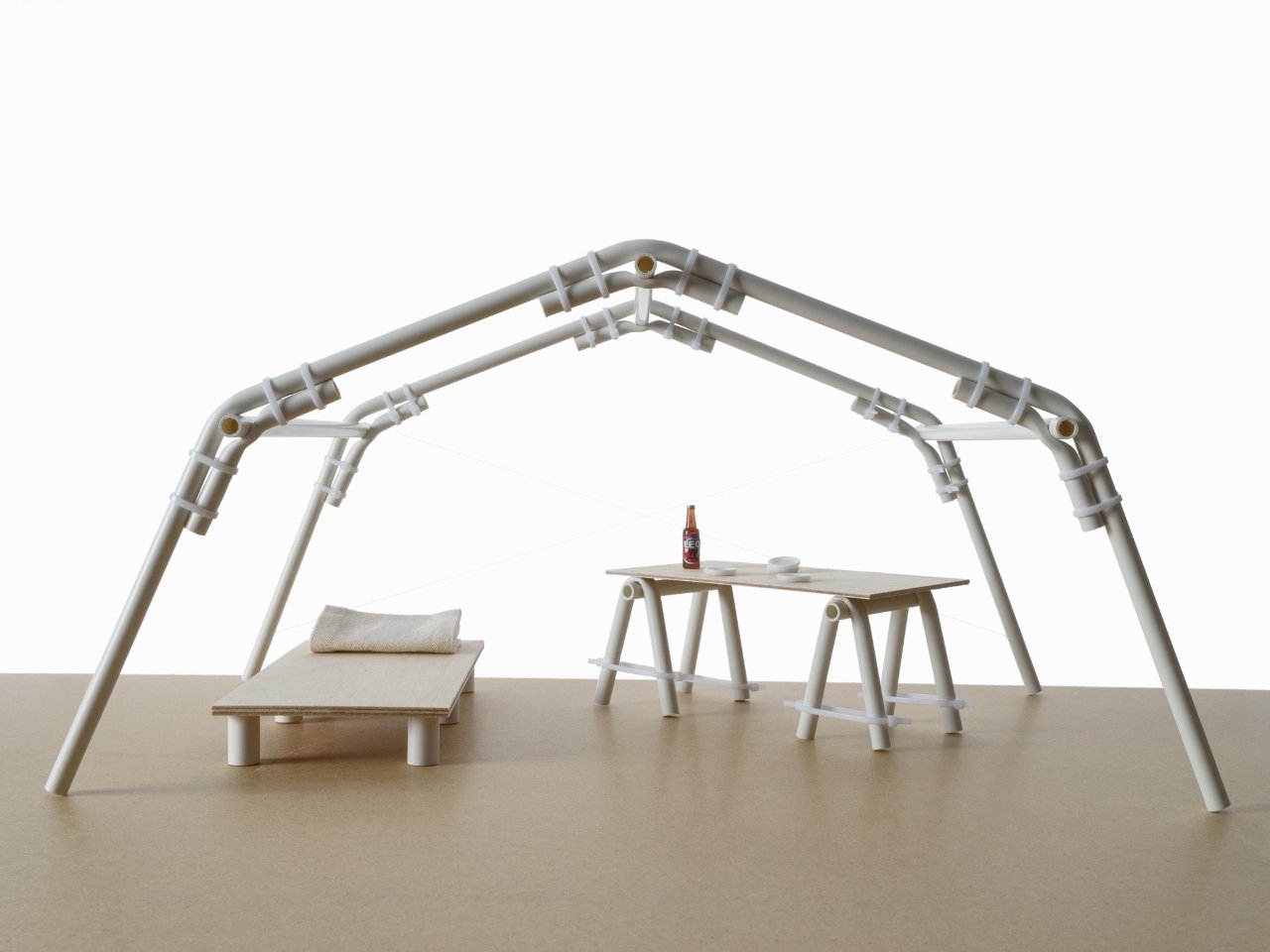You know that moment when you’re standing in the plumbing aisle at the hardware store, trying to find the exact right connector for your PVC project, and you’re thinking there has to be an easier way? Well, French designer Baptiste Marx might have just solved that problem with his project called CINTRE (French for “hanger”), and honestly, it’s so simple it’s kind of brilliant.
Here’s the thing about PVC pipe that most of us forget. It can be cut with simple tools, and once softened with heat, it can be reshaped easily. Marx took this basic property and turned it into an entire assembly system for emergency housing. Instead of hunting down T-joints, elbows, and corner pieces, you just heat up the pipe itself and bend it into whatever shape you need. Cable ties, which Marx calls flex clamps, are all that’s required to hold everything together. That’s it. Curved pipes and zip ties.
Designer Name: Baptiste Mark
The whole concept came from Marx’s work pursuing his Masters of Industrial Design at France’s ENSCI, with a background in composite materials project management. But this isn’t just a student exercise. CINTRE was developed in partnership with the French Red Cross, specifically aimed at crisis situations following natural disasters or conflicts, where sustainable reconstruction is delayed or impossible and shelter becomes an immediate necessity.
Think about disaster zones for a second. PVC pipe is a resource frequently available at disaster sites, where it can be recovered and reused. Buildings collapse, but PVC pipe can often be salvaged in useful quantities because of its wide use in plumbing and as conduits in construction. The beauty of Marx’s system is that you’re not dependent on finding specific connector pieces. You just need pipe, heat, and cable ties. Those cable ties, by the way, are a genuinely smart choice. They’re robust, economical, and easy to deploy for large scale humanitarian missions.
What makes PVC particularly suited for this is its intrinsic properties. It’s resistant to moisture and corrosion, which matters a lot when you’re building emergency shelters in unpredictable conditions. It’s lightweight, modular, and easy to transform without heavy tools or specialized know-how. Anyone who has worked with PVC knows it’s incredibly forgiving material. You can make a mistake, heat it up again, and reshape it.
The hot bending process Marx developed allows for both interior and exterior construction of shelters. Two sawhorse like assemblies combined with a flat surface make up a table. His joint designs show how basic bent shapes can create surprisingly sturdy structures. The photos of his work show shelters, furniture, and frameworks that look genuinely functional, and importantly, they offer what Marx describes as long term safety and dignity, not just temporary protection.
What I love most about this is the mindset behind it. CINTRE is not a fixed solution. It’s an exploratory project aimed at encouraging the emergence of new types of emergency housing. Its purpose is to be appropriated, adapted, and enriched by the people concerned, in order to best respond to local realities and specific needs. Instead of arriving with rigid plans and expensive pre-fab solutions, you’re giving people a tool they can adapt to their specific situations.
Yes, you could argue that traditional PVC connectors are widely available and come in every angle imaginable. And you’d be right. But that’s assuming you have access to a well-stocked hardware store and the money to buy all those specialized pieces. Marx’s system works with just the pipes themselves and cable ties, which changes the equation completely in resource limited situations.
CINTRE aspires to be part of a collaborative approach, intended as a tool serving affected populations that can be activated in various contexts. Is this going to replace conventional building methods? Probably not. But as a tool in the emergency response toolkit, particularly in situations where standard connectors aren’t available, it’s a genuinely clever approach. Sometimes the best innovations aren’t about inventing something completely new. They’re about seeing familiar materials in a different way.
The post Brilliant $0 PVC Pipe Technique Builds Emergency Shelters Without a Single Specialized Part first appeared on Yanko Design.

